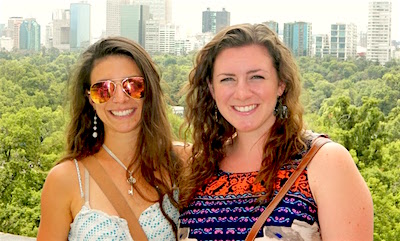Assessing Community Health in Mexico.

In Tlayacapan, east of the city of Cuernavaca in the Tepozteco mountains, the greatest health burdens include cardiovascular disease and scorpion stings.
But scorpion stings, at least, are “under control,” says Meaghan Sydlowski, a participant in the School of Public Health’s new Mexico field practicum in collaboration with the National Institute of Public Health (INSP) in Cuernavaca.
It’s cardiovascular disease that poses more of a challenge for this town, the center of a mostly agricultural, picturesque municipality where Clint Eastwood’s Two Mules for Sister Sarah and the video for The Killers’ “When You Were Young” were both filmed.
The challenge in addressing cardiovascular disease, the practicum participants discovered, is the community’s skewed perception of its own health.
“Regardless of the mortality data, members of the community would think cancer and diabetes were the biggest problems,” Sydlowski says. “If you proposed an intervention related to being more heart healthy, they would say, ‘But cancer is a bigger problem.’”
The practicum, led by Veronika Wirtz, associate professor of global health, began with playing catch-up. The INSP students “had worked on this assessment for months before we arrived,” Sydlowski says, “so we spent our prior months trying to get up to speed with them so we could jump right in when we got there.”
Sydlowski and the other SPH student in Cuernavaca, Sylvie Hundley, spent eight weeks living in a pair of spare rooms in the home of two INSP masters students and conducted all of their work in Spanish.
In Tlayacapan—an hour’s drive from the city—they collected health data and interviewed community members, identifying health disparities and priorities.
They also worked with the town’s health professionals, who taught them a valuable lesson in population health: Sometimes you have to meet the population halfway.
“They were saying, ‘We’re not going to implement a program that we don’t think is going to be well-received and is going to fail,’” Sydlowski recalls. “’We’re going to do something that we think will be accepted by the community, something that we can make progress with.’”
In addition to the community health assessment, Sydlowski and Hundley joined INSP researchers on a quality improvement project, evaluating the development of Mexico’s clinical practice guidelines for methodological rigor and transparency. The INSP researchers will present the findings to national public health policy makers to demonstrate the need for better quality guidelines.
For Sydlowski, working with INSP students was invaluable for the exposure to a diverse range of experiences and areas of knowledge. “We had a few physicians on my team, we had a dentist, we had economists…. It opened up the door for me to learn a lot from my team members.”
Sydlowski says she originally came to SPH for the Philippines program, but ultimately opted to participate in the new Mexico program because of post-graduation plans to work in Latin America. “I lucked out, considering I didn’t even know this program was going to exist!” Sydlowski says. “It ended up being perfect.”
Applications for next summer’s practicum will be accepted from December 1, 2015, until January 22, 2016.